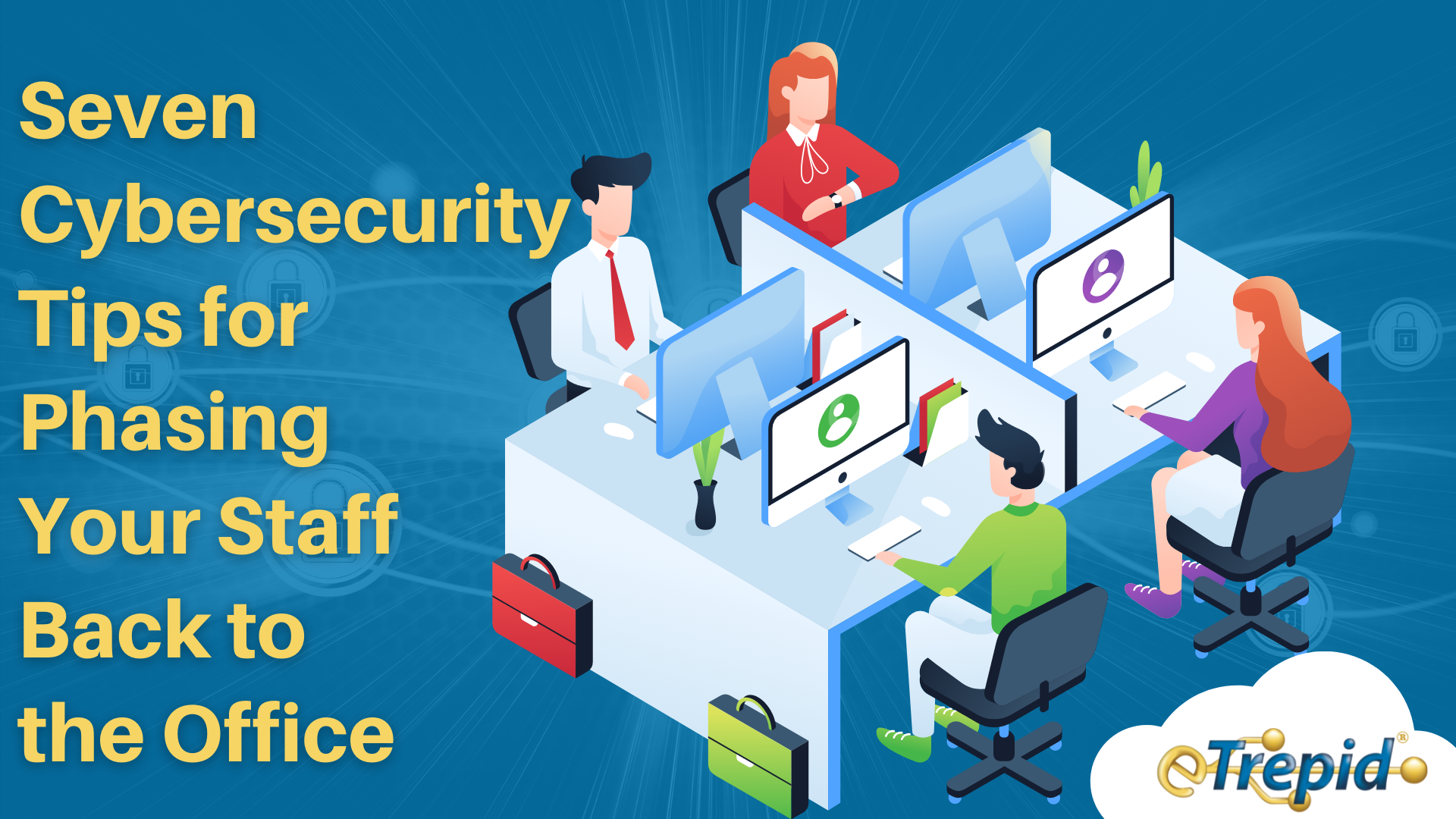As markets begin to recover from the pandemic disruption, some organizations are headed back to the office, while others opt for a hybrid approach. Cyber-aware companies can make the transition smoother by defending against the vast threats and vulnerabilities that lead to a breach. Find out how you can stay secure while phasing back to the office with our Return to the Office Cybersecurity Checklist.

As the U.S. economy begins to recover from the COVID-19 pandemic, many industries have already transitioned back to traditional office environments. While some companies have chosen to remain fully remote to accommodate labor market demands, others compromise by integrating hybrid solutions into their working models.
Amid challenges caused by all the moving parts, the last thing company leadership wants to grapple with is the increased threat of cybersecurity breaches. But grapple you must because your company's risk for cyberattack has never been greater.
Speaking at a recent cybersecurity conference in Germany this year, U.S. Deputy Attorney General Lisa Monaco said of the general cyber threat, "It has exploded, it has become more diffuse, more sophisticated, more dangerous than ever before."
Did you know? Man in the Middle (MITM) attacks are a particularly nasty type of Wi-Fi compromise. Hackers infiltrate private networks by impersonating access points to acquire login credentials. Attackers then set up hardware that imitates trusted Wi-Fi networks, often luring unsuspecting victims through the appeal of a strong Wi-Fi signal strength.
Return to the Office Cybersecurity Checklist
Organizations that don’t prepare for a data breach lie at the mercy of bad actors and expensive solutions with no guarantees about the road ahead.
As your team phases back into the office, use these critical cybersecurity practices to keep you protected:
- Password Protection: Weak passwords are still one of the most vulnerable areas of company cybersecurity. When transitioning back to the office, ensure your team members are regularly updating passwords and that there are clear procedures established for quick account recovery in the event that passwords are forgotten. Password protection is a fundamental part of a comprehensive cybersecurity strategy.
- Multifaceted Authentication: While passwords are fundamental to cybersecurity, they are ineffective on their own. Companies should have multifaceted authentication processes established that operate on a principle of zero-trust so that even if passwords and devices become compromised, organizations can remain secure and operational.
- Independent Devices: The risks posed to businesses by allowing team members to use personal devices to access company systems are too great to allow. For example, administrators cannot ensure that security patches and upgrades are current or that the device is free of ransomware or malware. Instead of permitting this risk, companies should mitigate it entirely by requiring team members to use standardized company equipment that is adequately maintained, easily accessible, and sufficiently secure.
- Network Security: Establishing and maintaining network security is another fundamental part of a comprehensive cybersecurity strategy. Companies should rely on the latest encryption techniques provided by virtual private networks (VPNs), and Transport Layer Security (TLS) encryption protocols. Many service providers also integrate remote-access VPN capabilities through Secure Socket Layer (SSL) encryption.
- Remote Connections: Companies need to know who is accessing their systems and how they are doing it. With integrated cybersecurity applications, organizations can authenticate and monitor access in real-time. Require team members working remotely to utilize VPNs and provide thorough cybersecurity training for all staff. You can't expect your team to protect company assets if you don't provide them with the tools and information they need.
- Incident Response Plans: Organizations should strive to establish cybersecurity defenses that can completely mitigate the threat of data breaches or cyberattacks by preventative measures alone. However, as cybercriminals constantly innovate, refine their methods, and develop new strategies to infiltrate business defenses, companies should also be prepared to respond to possible breach scenarios. Not only do companies need to maintain their security defenses, but they also need to establish clear and effective incident response plans if breaches occur. Companies must sufficiently practice identifying different possible cybersecurity breach scenarios without taking a one size fits all approach in developing an effective strategy.
For those who have returned to the office, either full-time or through a hybrid model, developing a secure and practical transition plan for your return is a complex, resource-heavy process tailored to your business. All the challenges of bringing people back together safely and efficiently can overwhelm in-house teams with other fires to put out.
A wise man once said, "It's dangerous to go alone." This holds true for cybersecurity, where the consequences of a breach can have catastrophic results for a business.
Enlisting the expertise of cybersecurity professionals can save you time (and having a Bitcoin broker set up your ransomware payment). With a skilled cybersecurity partner by your side, you're not navigating uncharted waters alone. Instead, you can focus on bringing staff back into the office and let the experts stay on top of your cybersecurity.
Trusted companies like eTrepid help provide cyber liability insurance to small businesses, support organizations in developing effective cybersecurity strategies, establish incident response plans and maintain secure operations.